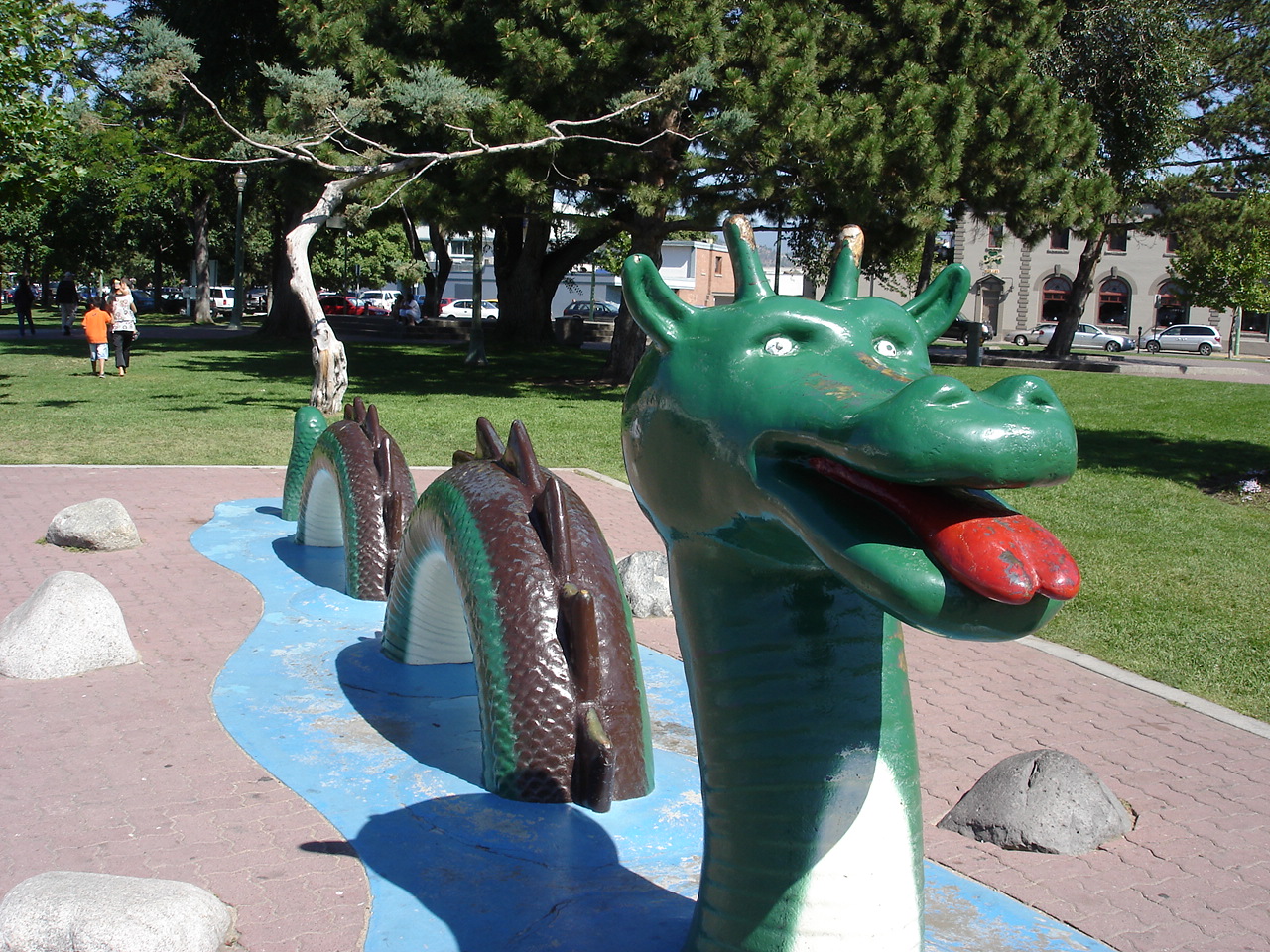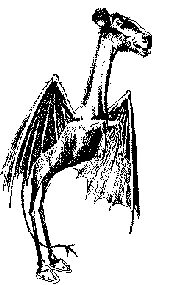
(Ogopogo, a water cryptid in Canada)
A friend and I were talking a few days ago, and the subject of Bigfoot came up (I can't remember how). We talked about the possibility of it at length, and moved onto the subject of Atlantis. Now, I'm not so great with things like that. I confessed that my area of expertise lay more with ghosts, UFOs and cryptozoology, and not really on Atlantis, The Bimini Road, or things of that nature. And then he asked me a question I honestly had trouble believing. "What is Cryptozoology?"
Wait, weren't we just discussing it? That's what Bigfoot is, after all. A large, bipedal cryptid sighted throughout North America (with cousins around the world) that science hasn't been able to fully explain yet. It hadn't ever dawned on me that there would be anyone out there in the internet/nerd/research community who didn't have a clue as to what Cryptozoology is. I guess I had shoved myself so far down the Cryptid tunnel that it became second nature to me.
So, now that I know that there are paranormal researchers out there who haven't the foggiest as to what Cryptozoology is, here's a little on the field of study, and some famous (and not so famous) creatures that have one time or another fallen under the category of "cryptid."
What goes on here?
Cryptozoology is the study of "hidden animals." Basically, it's the study of animals that may or may not have been properly discovered yet. Cryptozoologists research everything from the possibility of extinct animals making a return, to legendary and mythological animals, to animals sighted completely out of their regular range of habitat. Essentially, if science hasn't proven its existence, Cryptozoologists are studying it. And, while not recognized as a real branch of science, there are hundreds of people in the world who consider themselves Cryptozoologists.
Cryptids, a term coined by John Wall in 1983, refers to the unproven animals themselves. Creatures like Bigfoot, the Thylacine and Mothman are all considered cryptids.
So how about some examples?
1. Well, I've already done one blog on him, but the most famous example of a cryptid in North America is Bigfoot. Myths and legends from several Native American communities have helped shape the idea of a large, hairy man-like beast marching through the woods, swamps and fields of home. It came to full attention with the Patterson film, landing in the minds of the average Joe. Bigfoot, whether it be a very old relative of ours, or something completely different, has been sighted, photographed, filmed and casted a hundred times over. Are all of these pieces of evidence truthful? Of course not. But not everyone can be that good at creating hoaxes. So Bigfoot falls into the category of cryptid. We're not sure if it does exist, but we're slowly collecting the evidence we need to prove or disprove him.
2. The Okapi. Now a well-known creature in our zoos, until about 1901 the Okapi was a suspected animal called an Atti. There had been rumours of it, and Henry Morton Stanley described it as a kind of "donkey" native peoples in the area used. The Okapi was referred to as the "African Unicorn." Until its' skull was brought for research, explorers thought they were looking for a rainforest Zebra, not the creature they eventually found living in the African forests. Now the Okapi is displayed in several zoos throughout the world. But until it's official discovery, the Okapi was a well-known cryptid.

3. The Jersey Devil. Perhaps the second most infamous creature lurking in the fears of Americans from Jersey to California. The Jersey Devil, thought by legend to be the child of Mother Leeds and the Devil back in the 1700's, is a cryptid said to have a horse face, and hooves, but also has wings and walks upright. The legend has persisted, and even as recent as 2009, there were encounters with the creature and hoof prints found on a man's roof. Still considered a mythological creature, cryptozoologists all over know about this devil.

4. Mokele-mbembe. According to some, dinosaurs still walk among us. One of the more famous of these leftovers from the days of yore is the Mokele-mbembe. According to Congo tradition, this creature is a herbivore, living in the rivers and lakes of the Congo River Basin. There have been many, many expeditions to the area, with sightings happening during the vast majority of them. Elephant? Maybe. Dinosaur? Perhaps. But this is definitely under the sphere of cryptozoology.

There are so many more creatures that fall under the heading of "cryptid." These are just a tiny sample. But, they are some great ones to describe what Cryptozoology is and does a little better. I'll be featuring a lot of cryptids on this blog, so be sure to stop back by and check them out! If you have any questions, are a Cryptozoologist, or have creepy stories of your own.. I'd love to hear them! Put them in the comments section, or email me direct! Subject line: American Haunts